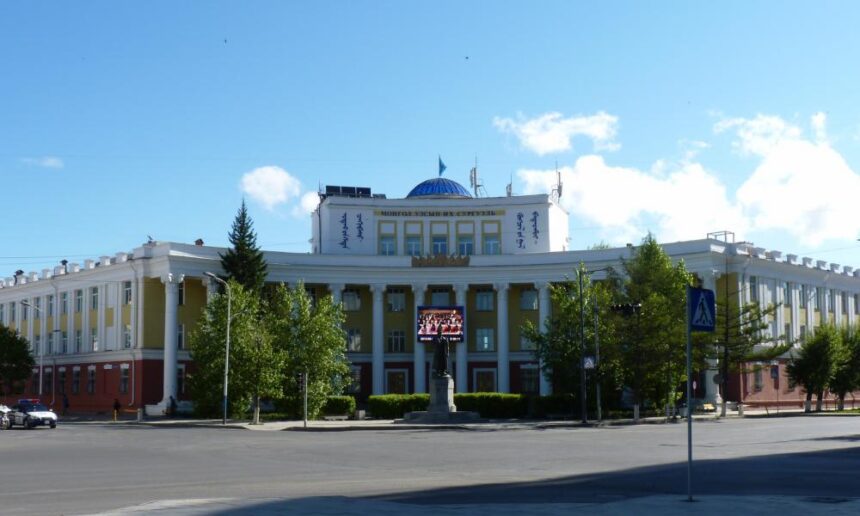EDUCATION in general, higher education in particular is investment. Like any investment it is made for the future benefits. In Mongolia, around 116 thousand students and their parents made such investment in the academic year of 2008-2009 through a total of 154 tertiary educational institutions and colleges: 48 state-owned, 101 non government/ private-owned and 5 foreign branches. The return of this major investment is particularly interesting.
The most important indicator according to the related ministry shows that 1/3 of all graduates find employment immediately. No one investigates when the remaining 2/3 become employed because this fact is not interesting to anyone except for the investors.
The main reason why so many young graduates 60 percent women with “attractive and outstanding” diplomas, as praised by the issuing institutions, cannot find employment is because they do not meet employers’ /private sector/ basic requirements: they are not self confident and cannot pass minimal tests. For example, English major graduates cannot talk about themselves persuasively, let alone translate or write properly.
If a product that has been prepared for 5 years does not sell and is used for an entirely different purpose than its initial intention, a time comes for the producer to reconsider his/her business and to study the defective process from the customer’s point of view, or at least those of the big players.
Similarly in our educational system, from the teaching process or business operations angle there appears to be no or very little standard for the final product quality. Furthermore, there does not appear to be any power that monitors and enforces this operation neither inside the schools nor in the related public offices.
The higher education institutions in Mongolia do not create an upgrading capacity in order to meet the rising demand of businesses under the ever increasing speed of globalization and IT revolution. In an open and democratic society, anyone who produces goods competes with the best brands of the flat world we live in. It means every university in Mongolia is in competition with Harvard or Princeton. Drinking “Coca-cola” or “Monfresh” depends on the choice of the individual.
When it is time to specialize in a certain field, half of the students in Mongolian institutions usually choose disciplines in social sciences or humanities. Today, when the majority of the country’s economy consists of mining production and development, we could already have established one school recognized worldwide in training specialists in the field by this time.
We cannot change the quality of our education without learning the English language, in which all information and potential knowledge of every field is available. There is a pragmatic need for leading tertiary institutions to create a bilingual society, a special part of today’s social and economic development.
University education should be in close sync with businesses, their research activities relating to the demand. Students should have long term internships in industries. Businesses must organize their own trainings too. In South Korea, for example, companies above certain level of turnover are required to have their own training program by law.
From the standpoint of major participating sides of higher education, including the teachers themselves, educators’ labor is not well respected. Teachers do not have satisfactory revenue. Some entrepreneurial teachers publish their own textbooks, update them every year and sell them to students by pressure. But nowhere on any page of the school guide does the related authority recommend these textbooks.
The price for the value of higher education, the most important investment in life, is in general very low in Mongolia. One side pretends to pay while the other pretends to work. That’s why teachers’ attitude is irresponsible. In Mongolia teachers teach only occasionally, come late to class if they do and often use cell phone messaging to send page numbers for in class reading to waiting students, thus developing an own sort of “distance education”.
There is little chance in our schools for students to express themselves freely, to become engaged in debates for developing self confidence the use of correct language. In the western system teachers let students speak during class and teach them though guided practice. In Mongolia, we have the opposite. There are no equal two lanes of teaching and being taught. There is only one way of pushing. That is why we have such few graduates who speak confidently. For a student, homework is not a chance to complete his/her knowledge on a subject; it is a way of punishment, work to be done for teachers. This is a common problem of our schools.
In order to correct these problems and avoid them in the future we can develop a proper ranking system of higher education institutions. This will increase competition among universities and further increase the quality of their product. Ranking of schools quality, capacity and potential through commonly accepted standards has become today’s social demand.
Every year in the USA, “US News & World Report” magazine publishes lists of schools ranked in categories. Schools and accredited independent audiences provide statistics. These rankings are indexes of reputation for schools.
Independent third party, the media bases its annual ranking of schools on peer institutions and administration evaluations of academic resources, retention of students, alumni donations (exempt of income tax), ratio of graduates to enrolled students and so on. Rankings are also based on the number of students employed immediately or in three to six months. In some cases of business graduate degree schools, they use the average salary level after graduation and other relevant variables.
Such ranking of higher education is important in decision making of the investors for a better return on investments. In addition, ranking is important for non discrimination of higher educational institutions in Mongolia through their property types (private/public).







